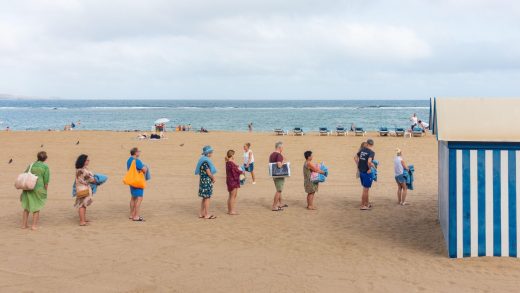Maor Moravia holds a pack of smokes upside down before hitting it against the palm of his hand, seemingly unfazed by the rib-shaking sound of outgoing mortar fire. As he pulls out a cigarette, he sighs, surveying the damage done to his home, Kfar Aza – a kibbutz located less than two miles from Gaza.
“This was our happy place,” the 37-year-old father of two says. “It’s so sad to see what has become of it.”
With each drag of his cigarette, Moravia places one foot in front of the other, careful not to accidentally step on any unexploded ordnance possibly left behind by the Hamas fighters who attacked the kibbutz on Oct. 7. With piercing eyes, Moravia stares down every blood-spattered stuffed animal, grenade divot, bulleted-riddled window, and destroyed home with purpose.
“I don’t relive it when I’m here,” he says of the violence his family survived. “Only when I talk about it.” It is Oct. 31, 24 days after the attack, and this is his fourth time returning home.
“The first time I saw the result of the battle, it was scary,” he says, before pausing. “That,” he says. “That’s the smell of death.”
The smell is a sour mix of feces, rot, flesh, and scorched explosives. Another round of mortar fire brings Moravia back to himself, and he, again focused on the scattered debris, takes another step.
“Before this happened, my children were asked how they would describe their home. They said, ‘Happy,’” Moravia recalls, smiling slightly. “I won’t let my wife and kids come back until the work is done, but every time I come here, I am more determined to rebuild.”
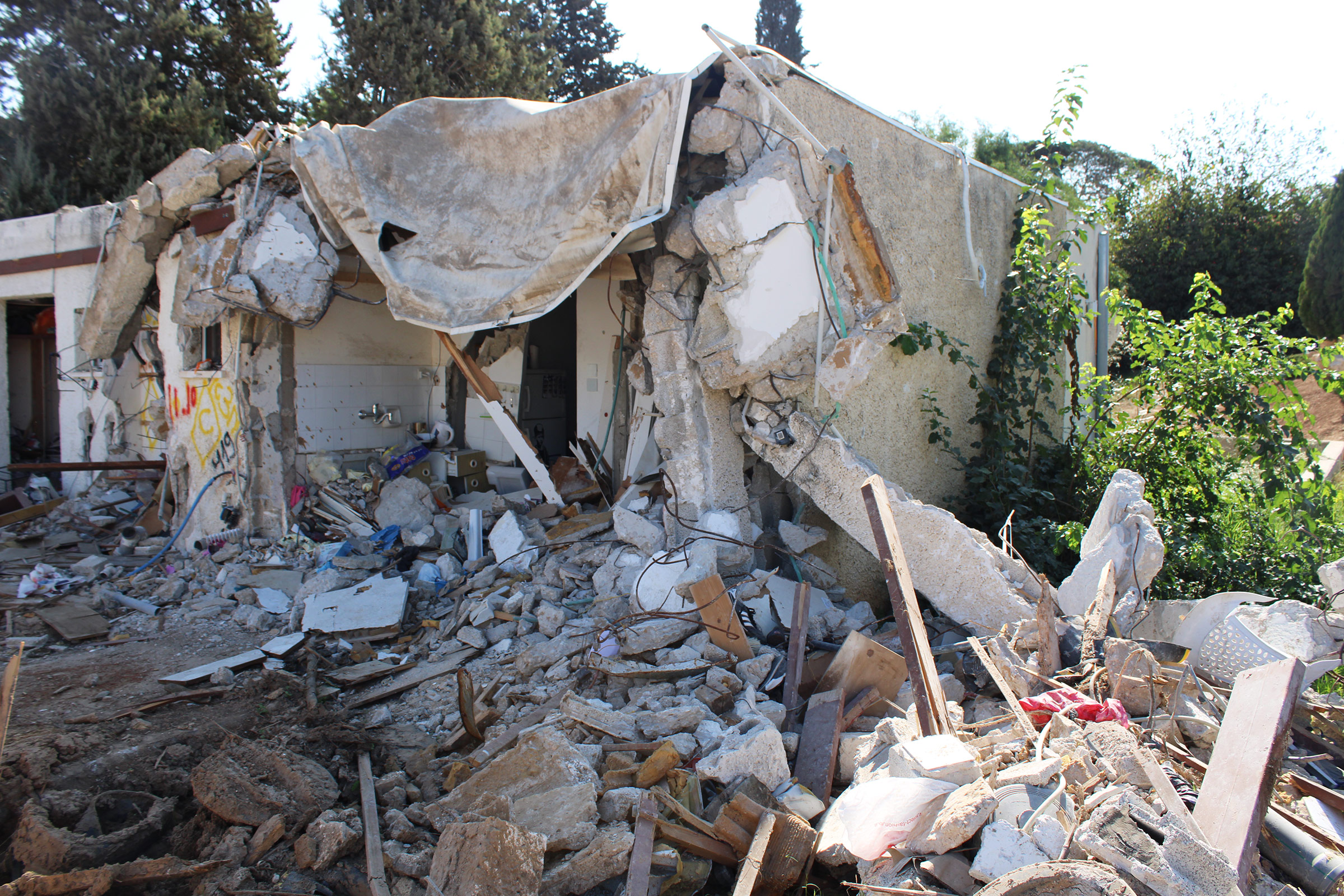

Around 900 people lived in Kfar Aza before it was invaded by Hamas fighters during the Jewish holiday Simchat Torah, according to a community leader named Hagar. (Hagar, like all Kfar Aza survivors interviewed for this story aside from Moravia, asked to be identified by first name only due to ongoing safety concerns.) After about 24 hours of intense rocket fire, grenade bombardment, RPG fire, gunfire, reported tortures, and kidnappings, an estimated 62 people were killed and at least 19 were either taken or remain missing, Hagar said.
Now Moravia, his fellow community members, and volunteers from nearby kibbutzim have returned to clean up the devastation and retrieve items left behind.
“We want to rebuild our village,” he says. “The people who died here – the families, the children who were murdered – we don’t want them to die in vain. Someone needs to go back and cherish their memory. We need to go back.”
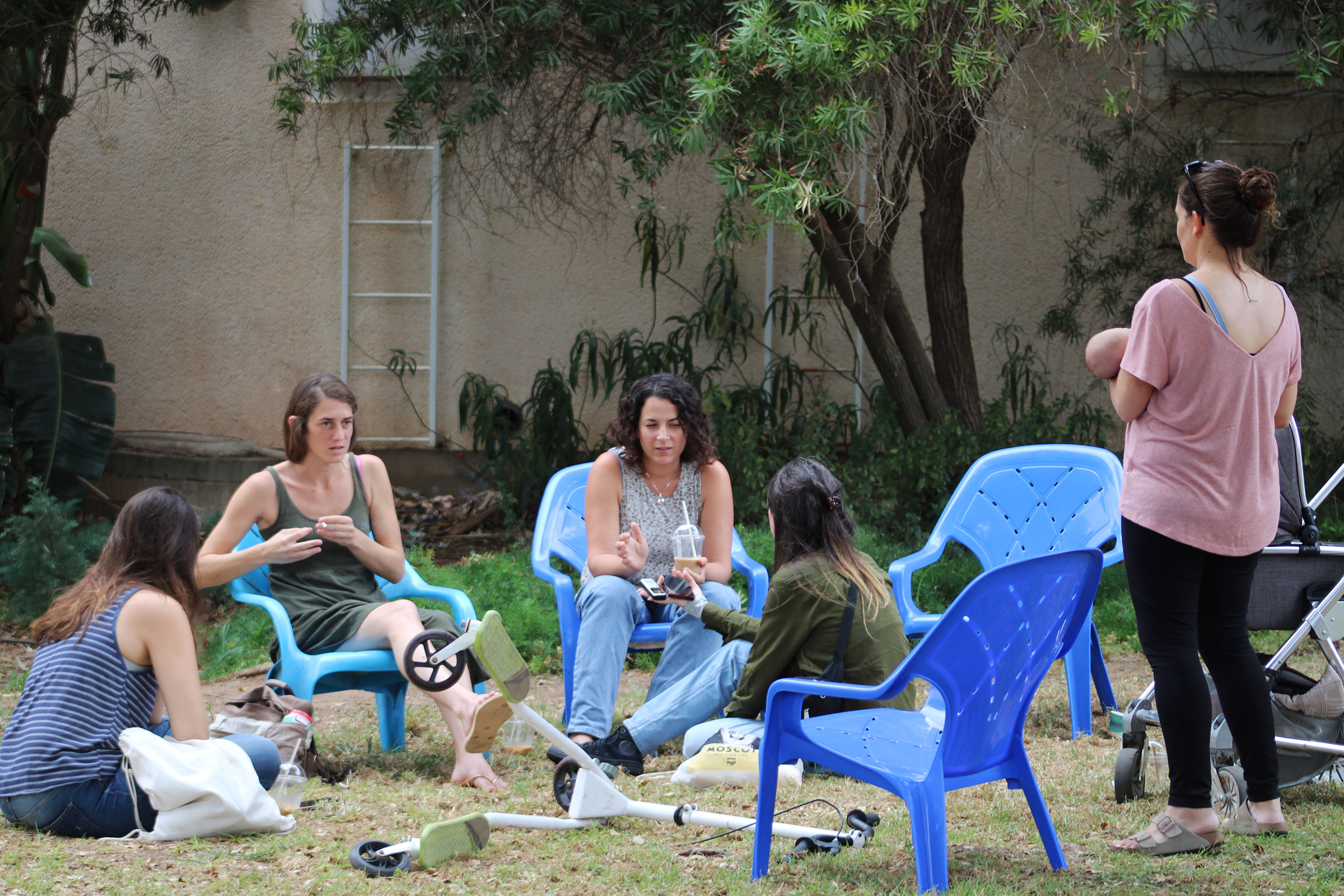

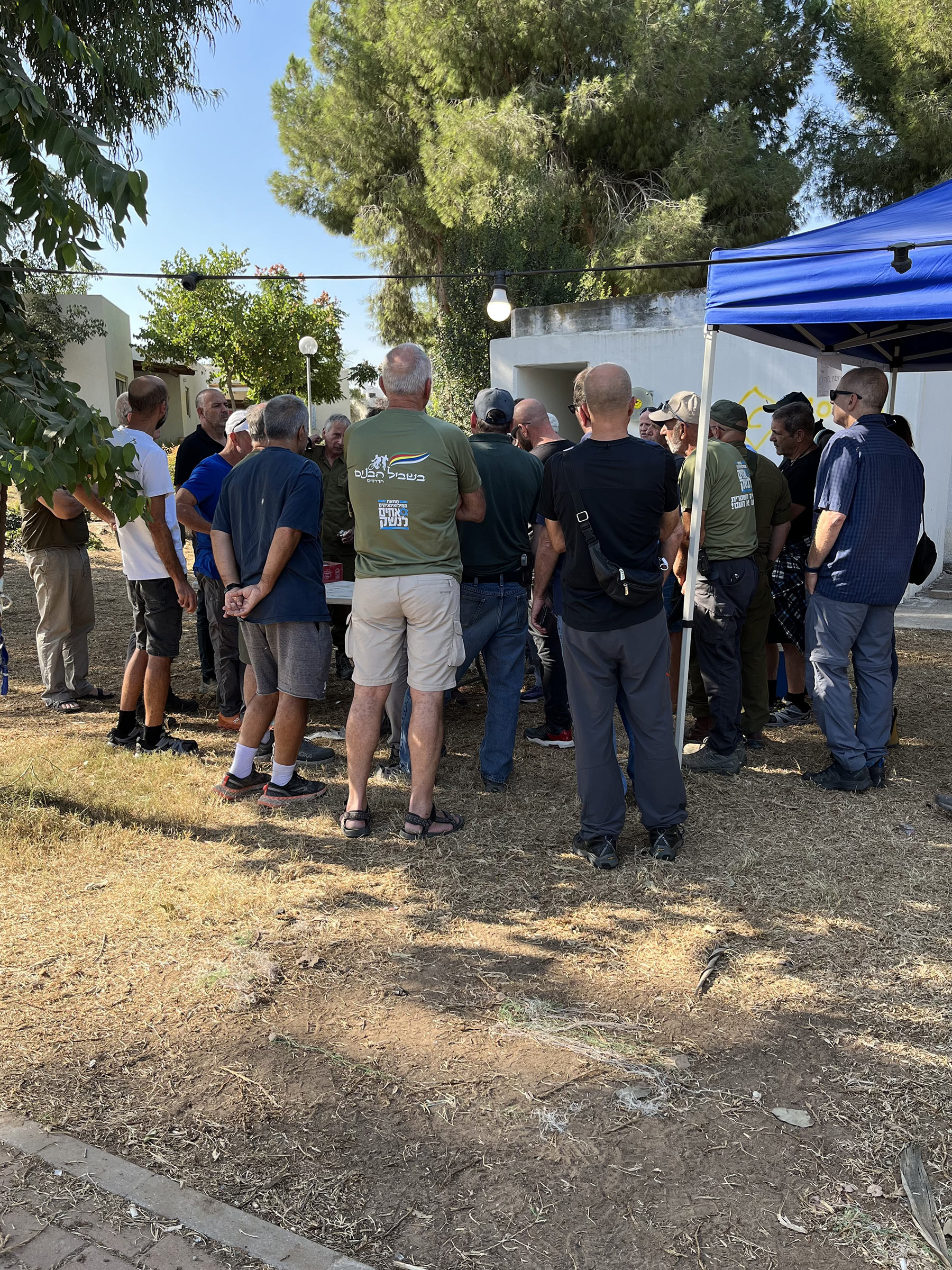
According to the Israeli government, 1,200 people were killed and 5,400 more were injured on Oct. 7 – what has been described as the deadliest day for the Jewish community since the Holocaust.
About 200,000 Israelis have been displaced inside their own country. The survivors of Kfar Aza are among them, most of them – including Moravia and his family – staying at Hotel Shefayim, located a little over 20 minutes from Tel Aviv and about 2 hours and 15 minutes from the kibbutz.
The security presence outside the hotel is substantial. Those who are not members of Kfar Aza must stop at checkpoints and are not permitted to enter the hotel without an escort.
Inside, the hotel is loud with the comings and goings of everyday life. Kids screaming in delight as they chase one another around and through the legs of their parents. Friends sharing cups of coffee. Teenagers huddled around a single phone, laughing as they scroll through feeds. A grandparent rocking their newborn grandbaby to sleep.
A makeshift kindergarten bustling with children is located at one end of the compound. Food carts (and a particularly coveted wine cart) await community members at another. One of the busiest locations – a crowded laundry room – sits at the center of the community’s new home, nestled underneath one of many rows of hotel rooms that will house the people of Kfar Aza for at least one year, possibly two.
“We started to build everything here again – the community, schools, whatever,” says Hagar. “We are taking back all of our lives.” The Israeli government is paying for the hotel and the rebuilding of the kibbutz, she says, but food, toys, diapers, clothing, electronics, and other items have been donated by grassroots and community-led organizations.
The desire to recreate some semblance of normalcy is palpable, yet it is impossible to ignore both the subtle moments and blaring reminders that the community has been devastated, that war is ongoing. Since Israel retaliated for the Hamas attacks, more than 14,000 Palestinians have died, according to the Hamas-run Health Ministry in Gaza.
There are the ever-present Israeli Defense Force (IDF) soldiers, loaded automatic weapons slung over their shoulders. There are the daily missile sirens that send every community member to the nearest shelter – a mix of scared, shocked, disassociated, and angry faces huddled together until the sirens end and the loud booms of the Iron Dome, Israel’s air defense system, dissipate.
Then there are the hugs shared between neighbors – each person holding on longer and tighter because they are painfully aware that a future embrace is not guaranteed. Everyone maintains eye contact as their heads tilt ever-so-slightly to one side, brows furrowed and eyes watering as story after story of violence and survival is shared.
Ayelet, 63, was sleeping inside her home when her 72-year-old husband, David, called her from the road outside the kibbutz. “He asked me if I was in the shelter,” she says. “Suddenly, I heard rockets and missiles. He said, ‘I’m coming to you.’ Once he didn’t come, I knew he was killed. He always came back to me.” Ayelet had lived on the kibbutz for more than 40 years, and the couple had just celebrated their 40th wedding anniversary.
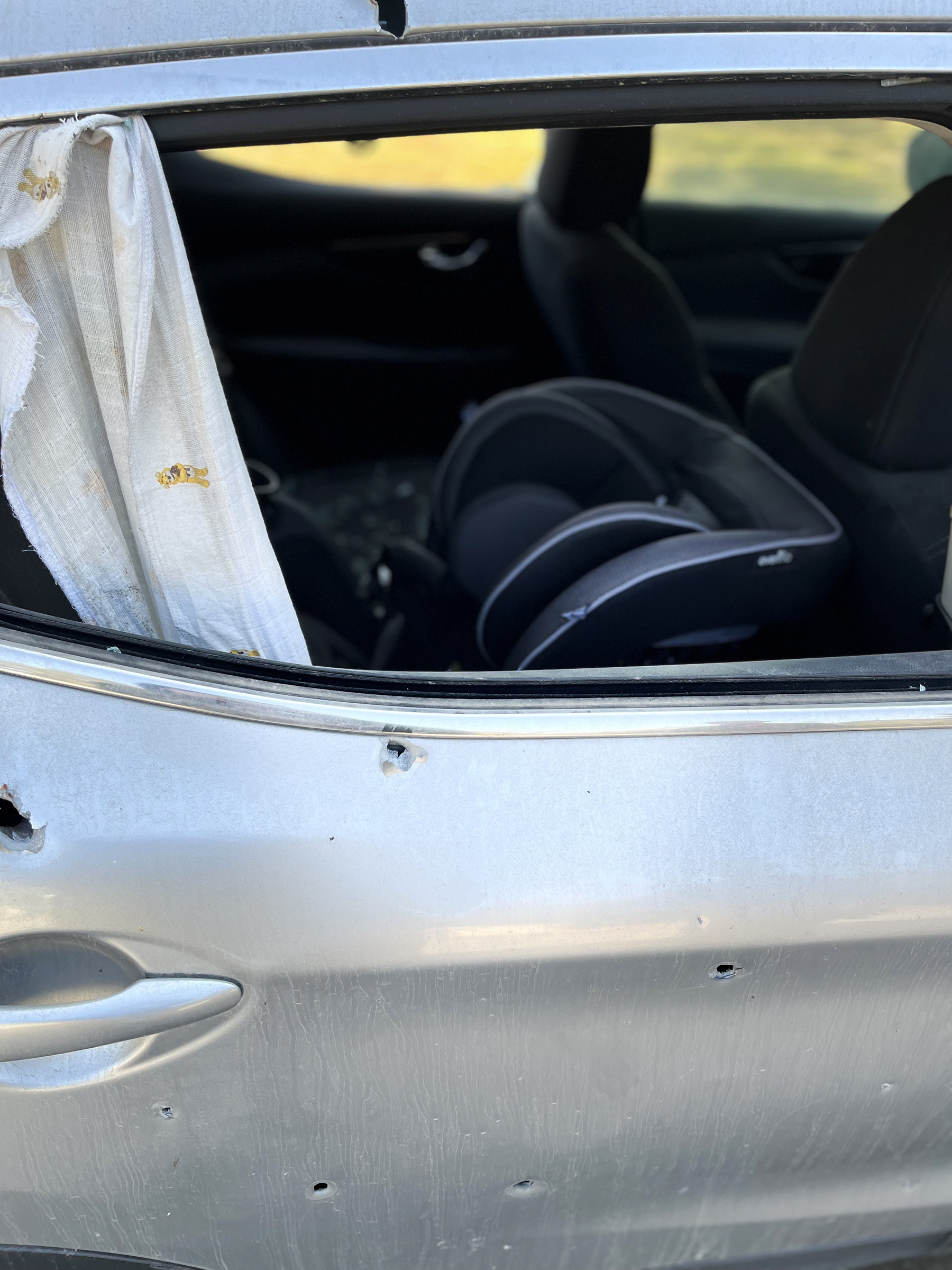
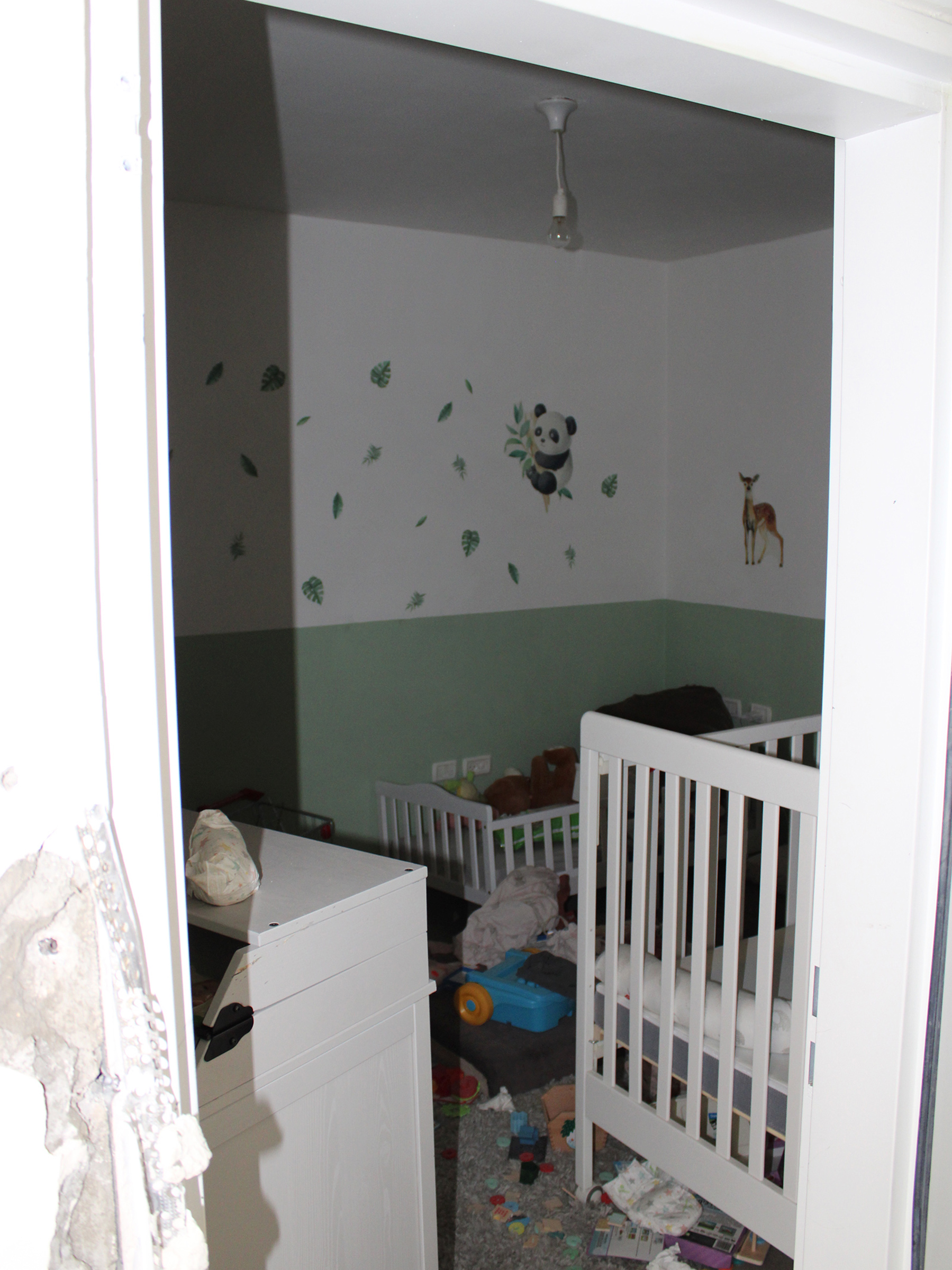
Amit, 36, a mother of three, hid in a safe room with her family for 25 hours before being rescued by IDF soldiers. To barricade the door, she disassembled her 1-year-old’s crib and used the wood to create a makeshift lock.
“That next morning was my son’s birthday,” Amit says. “We had a birthday cake. There was shooting all around us.”
Jessica, 34, Amit’s best friend and a mom of two, was with her children at her mother’s house 10 minutes away from Kfar Aza. Her husband, Nada, a member of the volunteer defense force for the kibbutz, was back home caring for the family dog when Hamas attacked. He was killed defending Amit’s home.
“My daughter is crushed,” Jessica says of her 6-year-old. “She understands that she doesn’t have a father anymore. My son … a 3-year-old can’t understand. The first week he would cry, ‘Daddy, daddy, daddy.’ It was heartbreaking.”
The stories of numerous atrocities carried out at nearby kibbutzim also permeate the community.
A 22-year-old paramedic killed in Kibbutz Be’eri while she tended to the wounded. In her final message to her family, she texted: “They’re in the clinic. I don’t think I’ll make it out of here.” A 36-year-old father of three, shot and killed inside his home in Kibbutz Nir Oz, along with his wife. Their twin 5-year-old girls and 2-year-old son suffocated to death after Hamas set the house on fire.
“We’ve been living outside of Gaza for years, wishing that peace would come,” Amit says, wiping away tears. “The people in the kibbutz want a peace agreement – we want our neighbors to be well.”
“You know what my daughter said?” Jessica asks Amit. “She told me, ‘I know why they came into the kibbutz. They are probably really poor and don’t have anything, so they wanted games and toys for their children.’”

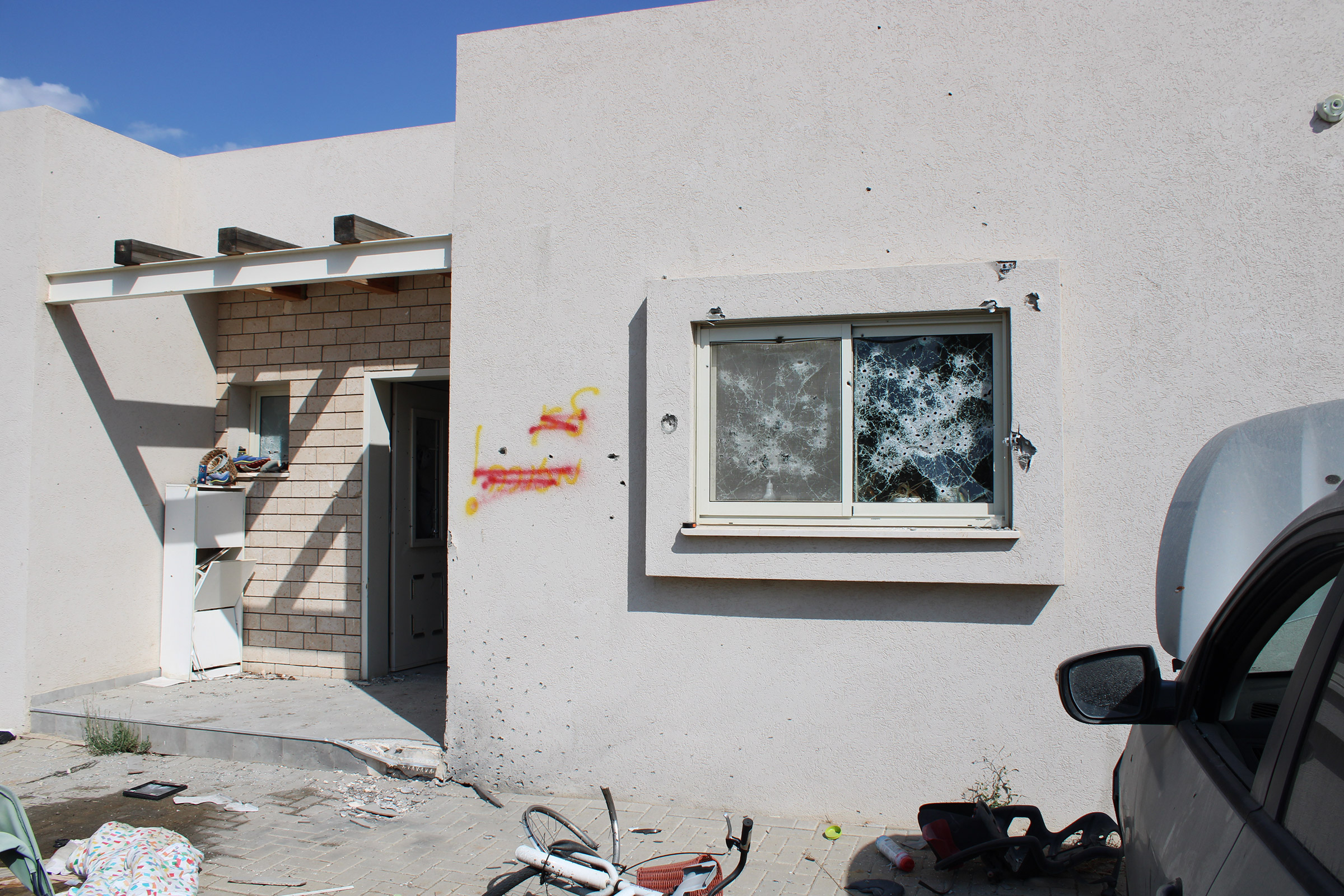
Moravia points to a quaint single-story home on what would be a typical, suburban-like street if it weren’t for a car half-crushed by an IDF tank parked nearby. “This is my house,” he says.
Holding a list of “missions” from his neighbors – collect a wallet, check on a home and grab a child’s favorite toy – Moravia has an objective of his own: to clean out his family’s fridge, so the rot will stink up his house, which no longer has electricity.
The front door is unlocked – there is no use securing his home, Moravia says. Immediately, he is greeted by a message his wife wrote on a wall of their home for IDF soldiers as the family was evacuating. “Beloved soldiers, please close the door,” it reads.
Moravia methodically checks on every room. Someone has slept in his bed, he points out. Someone also helped themselves to some of the family’s food.
He walks inside the safe room where he and his wife hid with their 8- and 12-year-old for nearly 24 hours until IDF soldiers arrived and gave the family five minutes to grab their belongings and leave.
“The kids were lying under the bed,” he says. “It was very hot, so we were sweating and there wasn’t a lot of oxygen … I had no idea what was going on outside, we just heard shooting and explosions.”
He wanted to protect his children from the reality unfolding around them, he says, but he “lost control” – his children started texting their friends and relaying updates. “Suddenly, my son said his friend’s house was on fire,” he says. “Then he said, ‘My friend’s grandmother is dead.’ Everything started feeling so unreal … We were defenseless.”
A boom from another outgoing mortar fire brings Moravia back to the present. He directs his attention to the task at hand. “It’s in good shape!” Moravia exclaims, looking in the fridge. “Oh, thank God!”
He begins throwing items into trash bags – packages of meat, containers of fruit, drinks, leftovers, spoiled insulin. He then carries the bags out the front door to the front of his home, accidentally leaving a trail of egg yolks behind him.
“Oh no! My wife is going to kill me,” he says, momentarily forgetting that she will not be returning home for some time. “Oh, never mind,” he corrects himself. “She won’t know.”
Satisfied with his efforts, Moravia shuts the front door and walks toward the group of volunteers to rejoin the cleaning efforts. As he lights another cigarette, he smiles before proudly declaring: “Next time, our community will be beautiful again. You will see. And you will love it.”
He then turns and walks away, navigating a sea of debris and stepping over a tattered and discarded halo from a child’s costume, softly swaying in the wind.
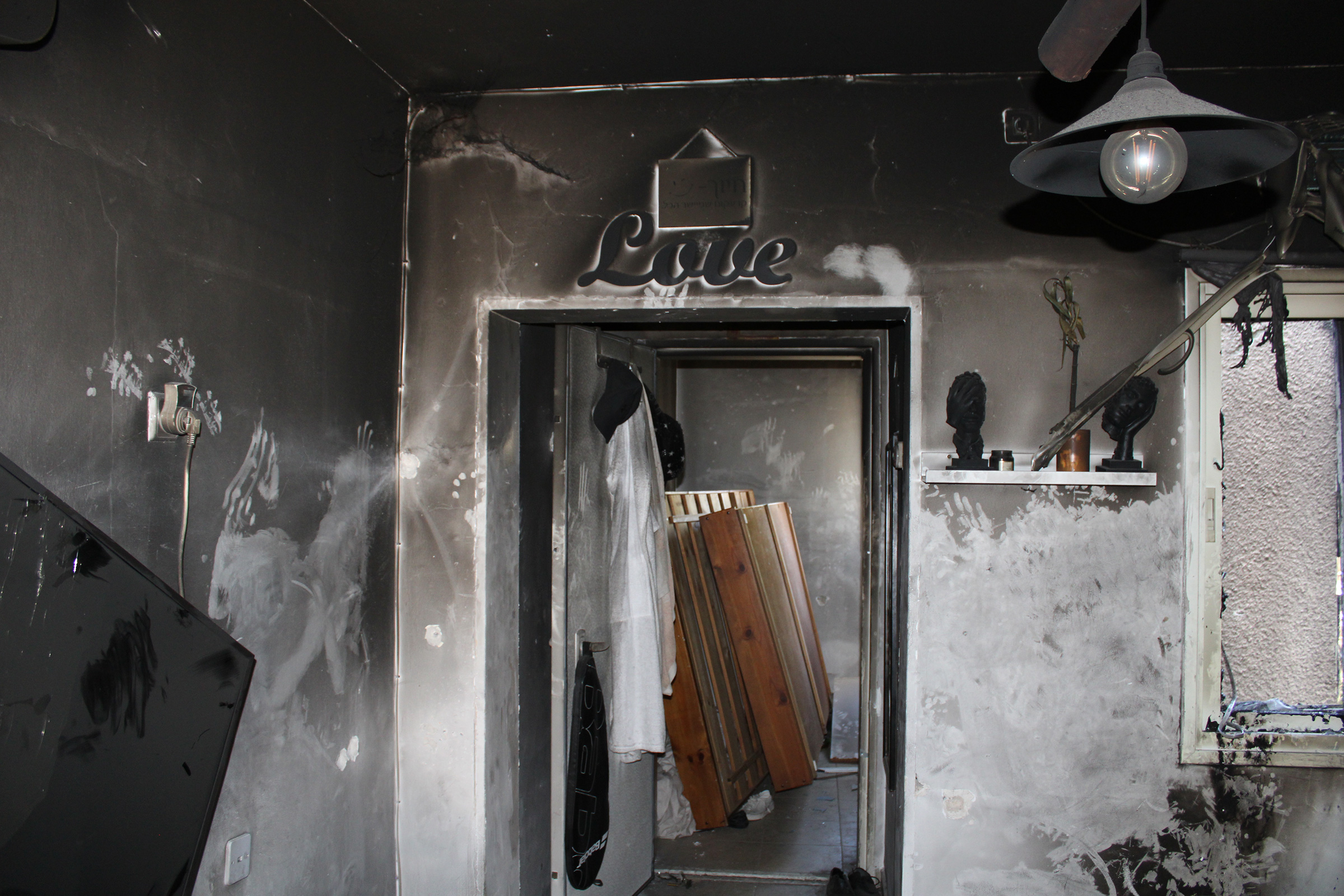
#Survivors #Kibbutz #Kfar #Aza #Israel #Hope #Rebuild
